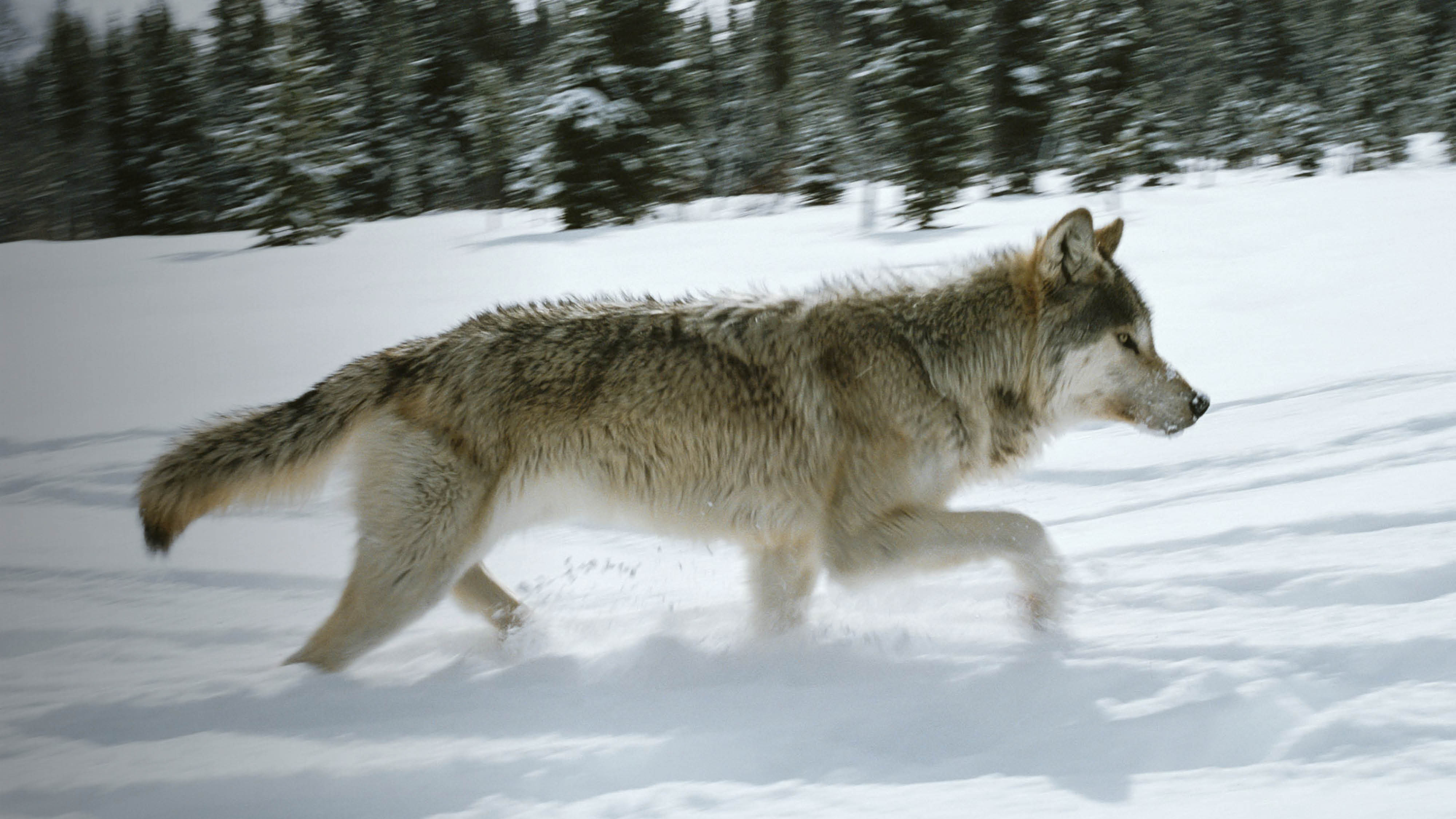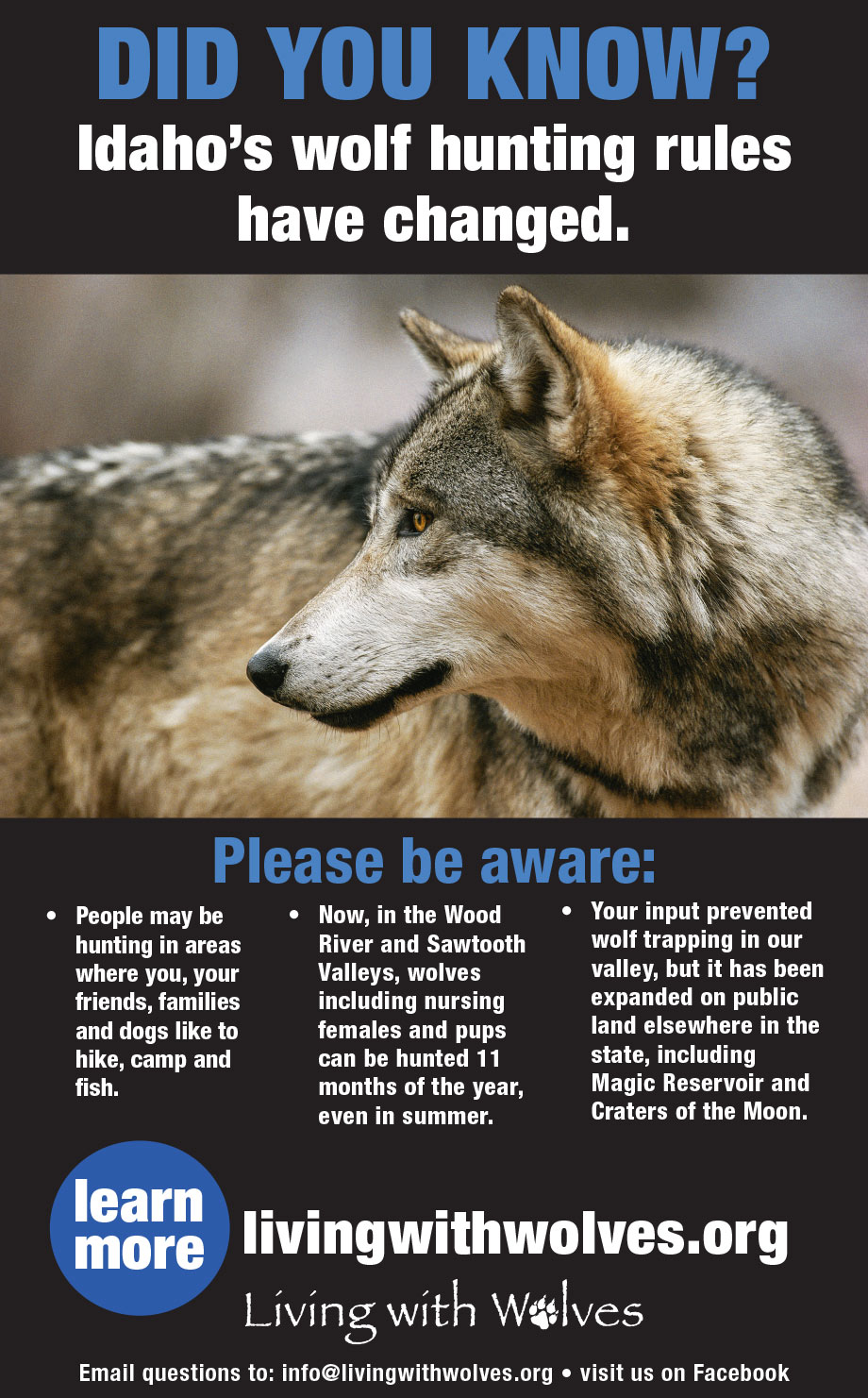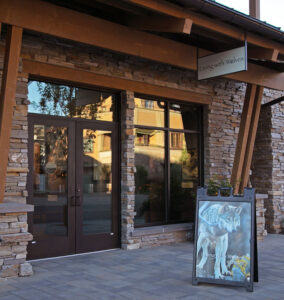Did You Know?
Idaho’s Wolf Hunting Rules Have Changed
As the situation for Idaho’s wolves continues to worsen, we at Living with Wolves will keep you informed. Thus far, 2020 has been a very bleak year for wolves in Idaho. The Idaho Department of Fish and Game continues to ratchet up public recreational hunting and trapping pressure on wolves in a misguided effort to significantly reduce the state’s estimated population of 1,000 wolves.
The New Rules
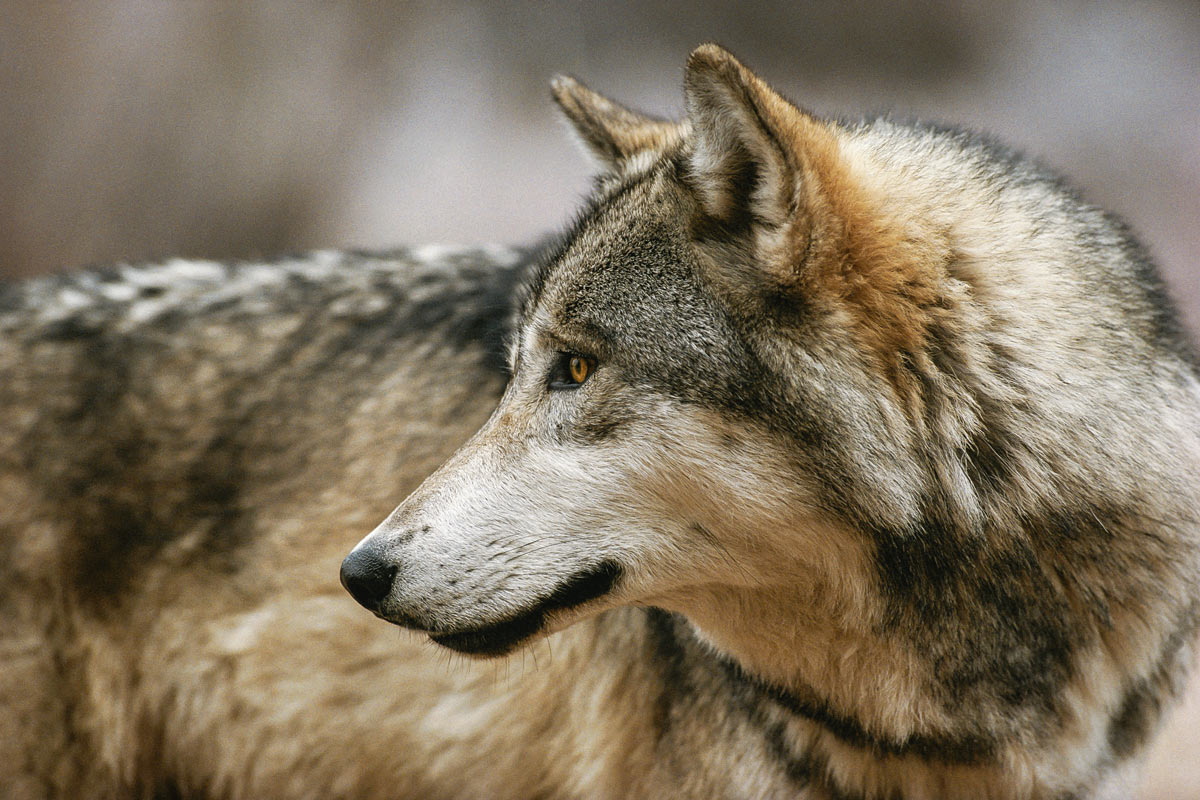
Despite receiving public input reflecting that 84% of the respondents voting on the proposed rule changes did NOT support them, the commissioners of the Idaho Department of Fish and Game nevertheless implemented new rules in January and February of 2020 that will affect Idaho’s wolves, wildlife, and everyone who enjoys Idaho’s great outdoors. As of early 2020:
- A single individual can kill 30 wolves in a given year, up from 10 wolves just a year ago. This decision was advanced without any public input, on the same day that the proposed changes described below were announced and then later adopted.
- Wolf hunting seasons have now been expanded statewide, from seven to eight months in most areas, to 11 months or year-round on both public and private land. This includes areas of the greatest outdoor recreational use in the state, including the Wood River Valley, the Sawtooth Valley and the Stanley Basin.
- Due to expanded seasons, now lactating females will be killed and pups will starve and perish during the months of late spring, when pregnant females give birth and nurse their dependent pups.
- Due to expanded seasons, wolves will now be hunted statewide in summer, the time when thousands of Idaho residents, families and visitors enjoy Idaho’s nature every day.
- Wolf trapping has now been expanded onto more public lands across southeast and south-central Idaho, where it was previously restricted to private land, including the areas of Magic Reservoir and Craters of the Moon National Monument.
- Twelve-month (year-round) wolf hunting on nearly all private land in Idaho.
- Twelve-month (year-round) wolf hunting south of I-84 across all of southwest and south-central Idaho where wolves have not yet returned. This action is intended to keep this region “wolf-free”, effectively cutting off genetic exchange and connectivity with wolf populations to the southwest of Idaho.
- Twelve-month (year-round) wolf hunting has now been established in areas of “chronic depredation” (including on public lands) defined as areas where USDA Wildlife Services has independently determined that wolves have killed one livestock animal in four of the past five years.
Why Is This Happening?
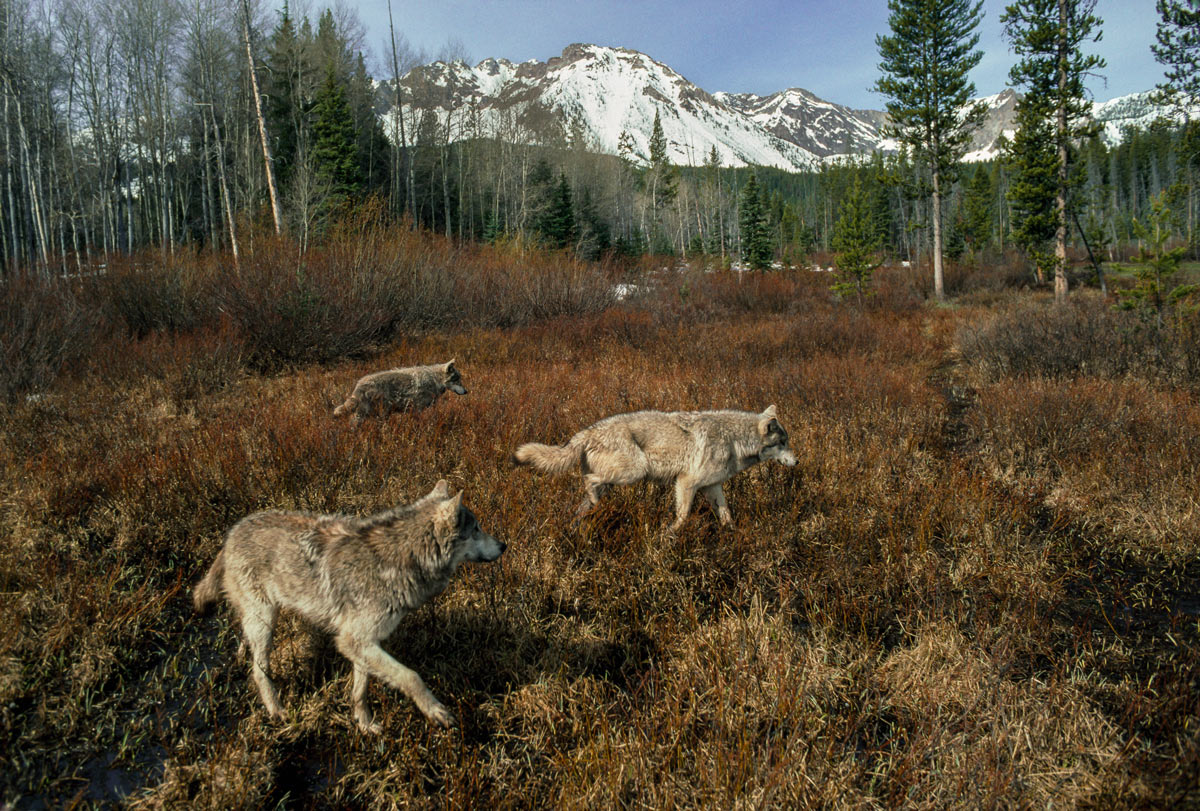
In only twelve months, the Idaho Department of Fish and Game (IDFG) has intensively changed the rules that govern recreational wolf hunting and trapping in the state. They have been implementing changes at a rate never before seen since gray wolves were reintroduced to Idaho in 1995 and 1996, not even allowing sufficient time to measure the effects of one set of changes before adopting the next.
After a decision this January to increase the number of wolves one individual can kill in a year to 30, on February 20, the IDFG adopted 9 new proposals designed to significantly reduce the number of wolves living in Idaho, as per the stated directive of the IDFG Commission. The new rules extend wolf-hunting seasons to last year-round across portions of Idaho and eleven months of the year in the remainder of the state. This includes the area surrounding Sun Valley, a world-renowned skiing and summertime outdoor destination economically dependent on recreation. Where there wasn’t before, now there will be hunting during summer months statewide, excluding the month of July in some areas.
This wave of changes in 2020 is the second recent round of sweeping modifications. The first occurred last March, when all but two hunting units (of the state total of 99 units) experienced expanded hunting and trapping regulations in terms of season duration and geographical distribution. While IDFG refers to this as “incrementalism,” in actuality it is a 100% increase, followed by a 50% increase over a nine-month period of the number of wolves an individual can kill, from 10 to 20 to 30. This activity does not fit the definition of “incrementalism.” The change in geographic exposure to trapping over the past two years reflects similarly extreme “increments.”
Distinct Sources of Pressure

First, over the past several years, the misleadingly named Foundation for Wildlife Management, with a homepage that reads, “Tired of wolves interrupting your hunt and displacing your wildlife?,” has been paying a bounty, described as a reimbursement of expenses, for dead wolves – up to $1,000 per wolf trapped and $500 per wolf shot, depending on location. With the sole purpose of killing wolves in hopes to grow elk numbers, this group has received at least one $20,000 grant from the Idaho Fish and Game Commission and even larger grants from the Rocky Mountain Elk Foundation.
The Foundation for Wildlife Management, in collaboration with the Idaho Trappers Association, has petitioned the IDFG Commission over the past several years and has succeeded in writing the guidelines for the very trapping proposals we now see in effect as new regulations.
Second, some of the hunting (not trapping) proposals mirror the intent of a bill that was introduced in January by rancher and State Senator Bert Brackett of Twin Falls. Brackett’s bill sought to designate “wolf-free” zones by creating a year-round wolf-hunting season. In response, IDFG scrambled to design proposals similar to the legislative intent, in order to retain their rulemaking authority and not be subverted by the legislative process. The remaining proposals were adopted to create consistent regulations statewide.
The Facts do NOT Support the Policies
As detailed above, these new policies are driven by politics and special interests rather than sound, science-based, wildlife management and are not supported by IDFG’s own data.
According to IDFG, there are at least 120,000 elk in Idaho, a population that has been steadily increasing, from 103,000 in 2010, and is nearing an all-time high of 125,000. Simultaneously, IDFG is reporting 1,000 wolves as the highest ever year-end population of wolves as they have steadily recovered since reintroduction in 1995 and 1996. Dating back to 1935, the past six years have been the second longest stretch ever recorded that hunters have killed more than 20,000 elk in Idaho. With 85 years of data, each of the past six years has ranked between the 4th and 15th most productive elk hunting seasons of all time in Idaho. Killing more wolves to grow more elk for hunting is not a scientifically driven decision.
One thousand wolves are neither a lot nor too many wolves for Idaho’s vast wild lands. For context, comparing populations of the large predator species, Idaho is home to 25,000 bears, 3,000-5,000 mountain lions and 50,000 coyotes. There is no biologically sound reason to drive down wolf numbers or to justify Idaho’s war on wolves.



